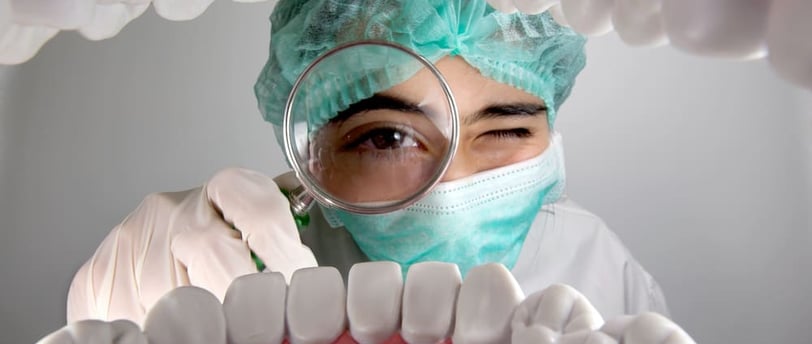Beat Oral Cancer with Regular Self-Exams
ORAL CANCER
Siddhant
2/2/20253 min read


Oral cancer is a serious health issue that often doesn’t get the attention it deserves. Many people don’t realize they have it until it’s too late, which is why early detection is so important. The good news? One of the easiest ways to catch oral cancer early is by doing regular self-examinations at home.
Why Self-Examination is important
Oral cancer can affect anyone, but certain habits like smoking, heavy drinking, or having HPV can increase your risk. The tricky part is that oral cancer often doesn’t show obvious symptoms in its early stages. By the time people notice something’s wrong, the cancer may have already spread, making treatment much harder.This is where self-exams come in. They’re a simple, quick way to check for early warning signs. When oral cancer is caught early, the chances of successful treatment are much higher—over 80%, in fact. Plus, self-exams are something you can do yourself, without any special tools or training. It’s all about being proactive and paying attention to your body.
How to Do a Self-Exam for Oral Cancer
Don’t worry—self-exams aren’t complicated. You just need a mirror, good lighting, and a few minutes of your time. Here’s how to do it:
Start with Your Lips and Gums: Pull your lower lip down and look for any sores, bumps, or changes in color. Do the same with your upper lip. Then, check your gums for anything unusual, like red or white patches.
Check Your Cheeks: Use your fingers to gently pull your cheek to the side. Look inside for any sores, lumps, or discolored areas. Repeat on the other side.
Examine Your Tongue: Stick out your tongue and look at the top, sides, and underneath. Pay attention to any bumps, patches, or changes in texture. If you see anything that looks off, take note.
Inspect the Roof and Floor of Your Mouth: Tilt your head back and look at the roof of your mouth. Then, use your finger to feel the floor of your mouth for any lumps or irregularities.
Look at Your Throat: Open your mouth wide and say “ahh” while looking at the back of your throat. Check for any swelling, redness, or unusual patches.
If you notice anything that doesn’t heal within two weeks—like a sore, lump, or patch—make an appointment with your doctor right away.
What to Look Out For
Knowing what to watch for is just as important as doing the exam itself. Here are some common signs of oral cancer:
Sores that don’t heal: If you have a sore in your mouth that doesn’t go away after two weeks, it’s worth getting checked out.
Red or white patches: These can appear on your gums, tongue, or the lining of your mouth.
Unexplained bleeding: If your mouth bleeds without an obvious cause, it could be a warning sign.
Lumps or thickening: Feel for any unusual bumps in your cheeks, neck, or jaw area.
Difficulty swallowing: If it feels like something’s stuck in your throat or swallowing becomes painful, don’t ignore it.
Persistent sore throat or hoarseness: A sore throat that doesn’t go away or a voice that stays hoarse could be a red flag.
Keep in mind, these symptoms don’t always mean you have oral cancer, but they’re worth discussing with a healthcare professional. Oral cancer is a serious condition, but the earlier it’s caught, the better your chances of beating it. By making self-exams a regular part of your routine, you’re taking an important step toward protecting your health. It only takes a few minutes, but those minutes could save your life.
If you notice anything unusual during your self-exam, don’t wait—see a doctor or dentist as soon as possible. Early detection is key, and your vigilance could make all the difference. So, grab a mirror, take a few minutes, and give yourself the peace of mind that comes with knowing you’re taking care of your health.
Empower
Together, we can create a society where cancer is no longer a death sentence but a challenge that can be overcome with timely action and unwavering support.
Join us in our mission to illuminate the path toward a healthier, cancer-free tomorrow. Every life saved is a testament to the power of collective effort and the enduring strength of humanity.
Connect
Support
onkozglobalfoundation@gmail.com
+91-7838033664
© 2024. All rights reserved.
Volunteer
Donate
Regd. Address:
C/o Raj kumari Devi, Teliaya Basti, Kailashpuri Mohalla, Jhumri Telaiya, Koderma, Jharkhand - 825409
